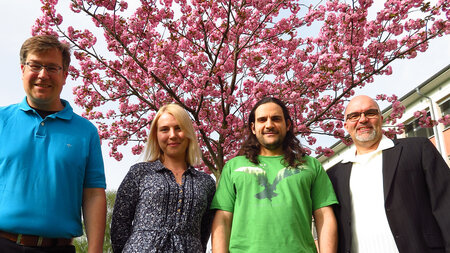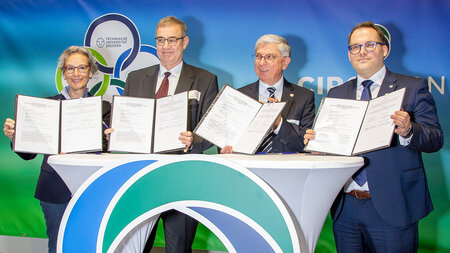Synchrotron Experiments
| Members |
Former Members: |
|---|
| Topics |
|---|
|
| Equipment |
|---|
|

| Members |
Former Members: |
|---|
| Topics |
|---|
|
| Equipment |
|---|
|
| Examples |
|---|
 |
|
From the dependence of the total electron yield on the angle of incidence the tilt angle of highly symmetric molecules (here cobalt-phthalocyanine) on the substrate can be determined. |
| Publications |
|---|
|
F. Haidu, M. Fronk, O. Gordan, G. Salvan, D.R.T. Zahn J. Ivanco, T. Toader, A. Firsov, M. Brzhezinkaya, M. Sperling, W. Braun, D.R.T. Zahn M. Oehzelt , S. Berkebile, G. Koller, J. Ivanco, S. Surnev, M.G. Ramsey T. Toader, G. Gavrila, J. Ivanco, W. Braun, D.R.T. Zahn T. Toader, G. Gavrila, W. Braun, J. Ivanco, D.R.T. Zahn D.R.T. Zahn, G. Gavrila, G. Salvan |

Chemnitz University of Technology receives a "StudyCheck Award 2024" and the "Top University 2024" certificate thanks to the very positive evaluations from its students and alumni – Additionally, Chemnitz University of Technology is the top state university in the live "Digital Readiness" ranking …

From April 23 on, the University Library presents “book gems“ of its „Historical Collections“ within an exhibition and on the occasion of the TUCday at April 27, 2024 …

A celebration of scientific exchange: young scientists Maria Saladina and Fabian Samad will meet Physics Nobel Laureates in Lindau from June 30, 2024 onwards, and have the opportunity to network with other young scientists from around the world …

The three Universities of Technology in Chemnitz, Dresden and Freiberg and the Zittau/Görlitz University of Applied Sciences signed the cooperation agreement for the joint establishment of the "Green Circular Economy" (CircEcon) research campus, which will receive over EUR 108M in funding …
Follow in old footsteps, meet former fellow students, teachers and colleagues and explore the …
Discover your future, study in the European Capital of Culture 2025. No matter whether you are …
We would like to invite you to our game evening! Whether you're an expert at Monopoly or just fancy …
Get in contact with interesting regional and nationwide employers. You have the possibility to find …
The Graduation Celebration is one of the most beloved traditions at the TU Chemnitz. Brand new …
New students are greeted each year at the beginning of the winter semester in a cherished …